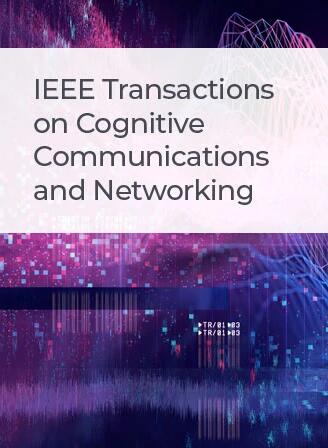具有自决定客户端的gan授权半异步联邦学习
IF 7
1区 计算机科学
Q1 TELECOMMUNICATIONS
IEEE Transactions on Cognitive Communications and Networking
Pub Date : 2025-01-09
DOI:10.1109/TCCN.2025.3527711
引用次数: 0
摘要
联邦学习(FL)作为移动边缘计算(MEC)中客户端隐私需求的一种有前途的解决方案已经获得了大量关注。然而,由于MEC中可用资源的频繁波动导致无效客户成为掉队者,因此FL存在准确性不稳定的问题。为了应对这一挑战,大多数异步FL框架允许参数服务器(PS)合理地调度客户端。由于MEC的客户资源变化频繁,这种集中式决策模式使得选择所有潜在客户变得困难。作为另一类解决方案,半异步FL框架遵循训练后选择范式,允许所有潜在客户端参与FL,但导致大量的计算和通信资源浪费。在本文中,我们提出了一种新的半异步FL框架HiveFL,其中客户端可以主动评估其资源的变化,以提高全局准确性并减少系统开销(即无效客户端引起的资源浪费)。HiveFL具有以下显著特性。首先,HiveFL允许客户端感知它们的资源状态。然后,自主客户根据对自身资源状况的评估,自主决定是否参加FL培训。其次,将实验结果与其他基线进行对比,HiveFL将全球平均测试精度和有效更新率分别提高了5.20% ~ 22.21%和20.3% ~ 88.6%。最后,HiveFL可以将平均计算成本(以FLOPs衡量)降低31.04%-81.45%。此外,为了解决客户端资源状态数据有限带来的问题,我们采用时间序列生成对抗网络(TimeGAN)方法,在训练FL模型的同时提供更多的客户端数据。我们在实验中证明了引入gan生成数据的有效性。本文章由计算机程序翻译,如有差异,请以英文原文为准。
HiveFL: GAN-Empowered Semi-Asynchronous Federated Learning With Self-Determining Clients
Federated learning (FL) has gained substantial attention as a promising solution to the need for client privacy in mobile edge computing (MEC). However, FL suffers from instability of accuracy because of the invalid clients who become stragglers caused by frequent fluctuation of available resources in MEC. To tackle this challenge, most of the frameworks of asynchronous FL allow the parameter server (PS) to schedule clients reasonably. This centralized decision-making paradigm makes it difficult to select all potential clients because client resources in MEC vary frequently. As another category of solutions, the semi-asynchronous FL frameworks follow the selection-after-training paradigm, which allows all potential clients to participate in FL but leads to a large waste of computation and communication resources. In this paper, we propose HiveFL, a new semi-asynchronous FL framework in which clients can proactively evaluate the changes in their resources, to improve global accuracy and reduce system overhead (i.e., the waste of resources induced by ineffective clients). HiveFL has the following notable properties. Firstly, HiveFL allows clients to perceive their resource status. Then, self-determining clients autonomously determine by themselves whether to participate in FL training according to the evaluation of their resource status. Secondly, comparing the experimental results with other baselines, HiveFL improves the average global test accuracy and the effective update ratio by 5.20%-22.21% and 20.3%-88.6%, respectively. Finally, HiveFL can reduce the average computation cost (measured by FLOPs) by 31.04%-81.45%. In addition, to address the problem brought by limited client resource status data, we adopt the time-series Generative Adversarial Networks (TimeGAN) method to provide more client data while training FL models. We prove the effectiveness of introducing the GAN-generated data in our experiments.
求助全文
通过发布文献求助,成功后即可免费获取论文全文。
去求助
来源期刊

IEEE Transactions on Cognitive Communications and Networking
Computer Science-Artificial Intelligence
CiteScore
15.50
自引率
7.00%
发文量
108
期刊介绍:
The IEEE Transactions on Cognitive Communications and Networking (TCCN) aims to publish high-quality manuscripts that push the boundaries of cognitive communications and networking research. Cognitive, in this context, refers to the application of perception, learning, reasoning, memory, and adaptive approaches in communication system design. The transactions welcome submissions that explore various aspects of cognitive communications and networks, focusing on innovative and holistic approaches to complex system design. Key topics covered include architecture, protocols, cross-layer design, and cognition cycle design for cognitive networks. Additionally, research on machine learning, artificial intelligence, end-to-end and distributed intelligence, software-defined networking, cognitive radios, spectrum sharing, and security and privacy issues in cognitive networks are of interest. The publication also encourages papers addressing novel services and applications enabled by these cognitive concepts.
 求助内容:
求助内容: 应助结果提醒方式:
应助结果提醒方式:


